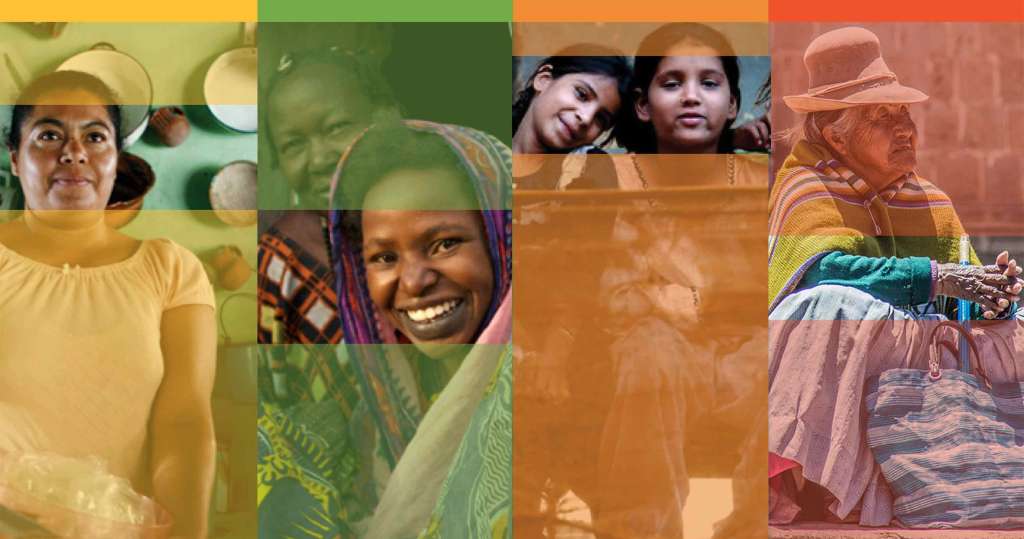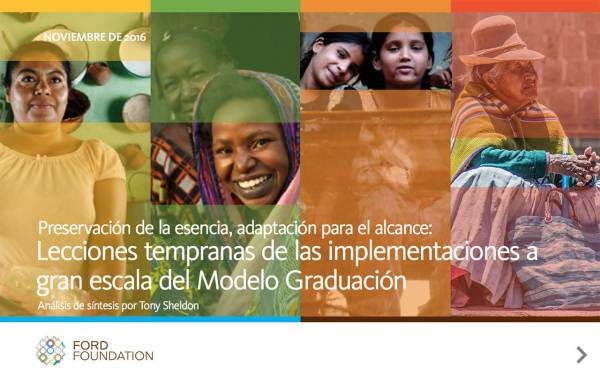
CGAP, the Ford Foundation and their partners have been exploring how best to support large-scale adaptations and implementations of the Graduation Approach, especially by governments.
Governments throughout Africa, Asia and Latin America are increasingly recognizing the complementary nature of the Graduation Approach with their own social protection programs, with over 15 government-implemented Graduation programs now underway. In a number of countries, government commitment to scaling up a Graduation Approach is coinciding with national initiatives to increase the availability and use of financial services: the Graduation Approach can be a first step toward financial inclusion for the hardest-to-reach segments of the population.
However, government agencies implementing such a complex, multi-faceted and cross-sectoral program means that some of the “standard” features of the Graduation Approach need to be adapted, often in innovative and imaginative ways, while still preserving the core elements of the Approach.
To further understand the opportunities and challenges faced by governments in the implementation of a Graduation Approach, the Ford Foundation has commissioned three case studies to examine the planning and execution of Graduation programs launched by the governments of Colombia, Peru and Ethiopia.
- In Colombia, “Producing for My Future” is being implemented by the national Department of Social Prosperity with extensive technical assistance from Fundación Capital. Launched as a pilot program in 2013, “Producing for My Future” began major scaling up in 2015 and is designed to last two years at each site and to reach 35,000 families by 2018.
- The Graduation program in Peru, “Haku Wiñay” (“We are going to grow” in the Andean Quechua language) is based on an earlier program, “My Entrepreneurial Farm,” that offered a flexible menu of assets and technical training. Aspiring to be a nationwide program to promote social and economic inclusion of extremely poor rural families, Haku Wiñay has four components: improving productivity of family farms, upgrading sanitation and health practices in homes, promoting rural businesses, and training in financial literacy. The program was launched in 2012 and lasts for three years at each site. By 2015 the program had reached 90,000 families.
- The Graduation Approach in Ethiopia began as a small CGAP-Ford Foundation Graduation pilot with a nongovernment organization (NGO) in northern Tigray province implemented by Relief Society of Tigray from 2010 to 2012. The Approach is now included as an integral part of the next iteration of the national Productive Safety Net Program—the fourth iteration of this extensive food security-focused program to be launched in 2016. Up to 10 million social protection clients will be eligible for access to elements of the Approach between 2016 and 2020, with the poorest 30% specifically earmarked for asset transfers.
The Foundation also commissioned a fourth case study on the scaling efforts by Bandhan in India, one of the original CGAP-Ford Foundation pilot programs, to illustrate scaling efforts led by a financial services provider and an NGO. A synthesis piece, highlighting the key learnings, was also recently released.
It is especially important that programs that make significant changes in the design and delivery methodologies of the Graduation Approach are both thoroughly documented and then assessed to determine whether the adapted approaches are still able to deliver a high degree of positive outcomes. These assessments can be used not only to make adjustments in program design by the government implementing the revised approach, but also should be shared among the broader Graduation community of practice to inform other governments’ ongoing and future programs. Otherwise we will be missing a crucial opportunity to learn from one another about what works and what doesn’t.
Government-implemented Graduation programs offer great promise, and may well prove to be the most effective and efficient way of scaling up the Graduation work. Only by continuing to capture, document and share learnings—as government implementers adapt the core elements of the Approach—will we be able to realize that promise. We hope that the lessons gleaned from the case studies on these three pioneering programs will contribute to this broader learning effort.
This article was originally posted on www.cgap.org.
Read the complete analysis and case studies here.

